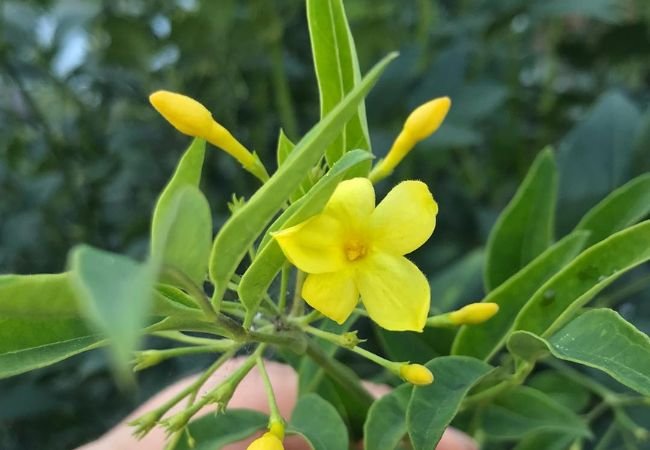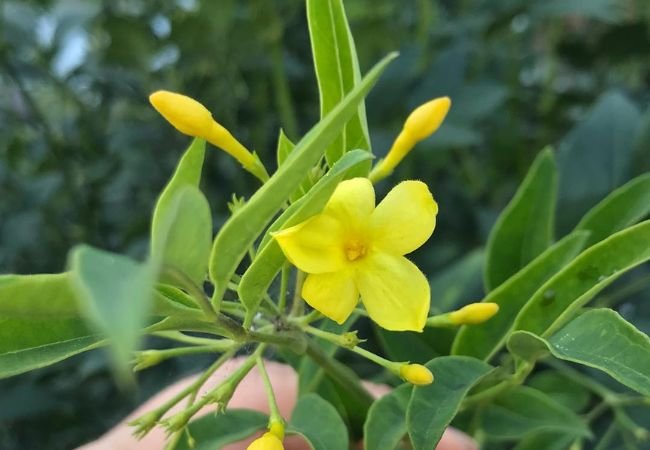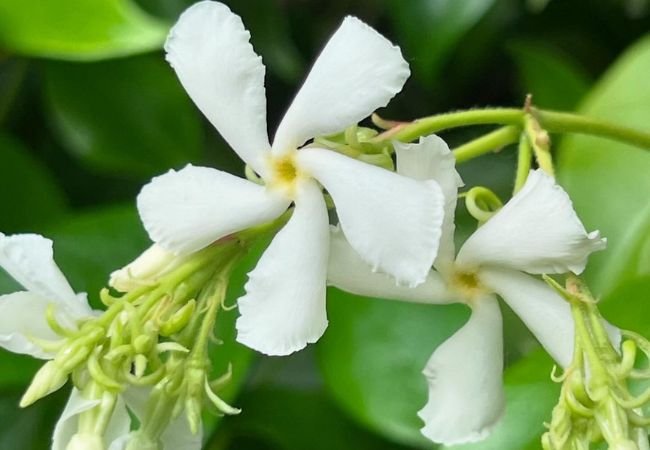Explore Italian Jasmine, a fragrant yellow-flowering shrub perfect for adding Mediterranean flair to your garden. Learn how to grow and care for this versatile plant and discover its many uses in landscaping and garden design.
Discover the allure of Italian Jasmine, a fragrant and elegant flowering shrub that brings a touch of Mediterranean charm to any garden. With its clusters of star-shaped flowers and glossy foliage, this plant is a favorite among gardeners seeking both beauty and fragrance.
Here’s an information chart for Italian Jasmine (Jasminum humile ‘Revolutum’):
| Category | Information |
|---|---|
| Botanical Name | Jasminum humile ‘Revolutum’ |
| Common Name | Italian Jasmine |
| Plant Type | Evergreen shrub |
| Hardiness Zone | Zones 6-9 |
| Sun Exposure | Full sun to part shade |
| Soil Type | Well-draining, fertile |
| Watering | Moderate |
| Growth Habit | Upright, spreading |
| Height/Spread | 4-6 feet tall, spreads 4-6 feet |
| Special Features | Fragrant yellow flowers in spring and summer, attracts pollinators, drought tolerant once established |
What is Italian Jasmine?

Italian Jasmine, scientifically known as Jasminum humile, is an evergreen or semi-evergreen shrub that produces clusters of small, yellow flowers. Despite its common name, it’s actually native to southwestern China and the Himalayas.
Origin and Characteristics
Though not truly Italian, this jasmine has been cultivated in Italy for centuries. Key features include:
- Dark green, compound leaves
- Fragrant, yellow flowers
- Upright, bushy growth habit
- Spring to summer blooming period
How to Grow Italian Jasmine
Planting:
- Choose a location with full sun to partial shade
- Ensure well-draining soil
- Plant in spring or fall
- Space plants 3-4 feet apart
Care Tips:
- Water regularly, especially during dry spells
- Fertilize in spring with a balanced, slow-release fertilizer
- Prune after flowering to maintain shape and encourage bushiness
For detailed growing instructions, visit the Royal Horticultural Society’s growing guide.
Uses in the Garden
- Flowering Hedge: Create a fragrant, informal hedge or screen.
- Foundation Planting: Use as a decorative shrub near house foundations.
- Container Plant: Grow in large pots for patios or balconies.
- Accent Plant: Use as a focal point in mixed borders or Mediterranean-style gardens.
Benefits of Italian Jasmine
- Fragrance: Adds a sweet scent to the garden.
- Attracts Pollinators: Flowers attract bees and butterflies.
- Drought Tolerant: Once established, it can withstand dry conditions.
- Year-round Interest: Provides evergreen foliage in mild climates.
Common Issues and Solutions
- Poor Blooming: Ensure adequate sunlight and proper fertilization.
- Frost Damage: Protect in colder regions. Consider mulching in winter.
- Pests: Watch for aphids and scale insects. Treat with insecticidal soap if necessary.
For more information on plant health, consult the USDA’s National Institute of Food and Agriculture.
Interesting Facts
- Despite its yellow flowers, there’s a white-flowered variety called ‘Revolutum’.
- It’s sometimes called “Italian Yellow Jasmine” to distinguish it from other yellow jasmines.
- In traditional medicine, it has been used for various purposes, though scientific evidence is limited.
Italian Jasmine offers a perfect blend of Mediterranean charm and versatility for gardens. Its fragrant flowers, attractive foliage and adaptability to various conditions make it a popular choice for gardeners worldwide. Whether you’re looking to create a fragrant hedge, add structure to your garden or simply enjoy the sweet scent of jasmine, Italian Jasmine is an excellent option to consider.
For more gardening tips and plant care guides, visit usagardenhub.com.







2 Comments on “Italian Jasmine : A Mediterranean Beauty for Your Garden”